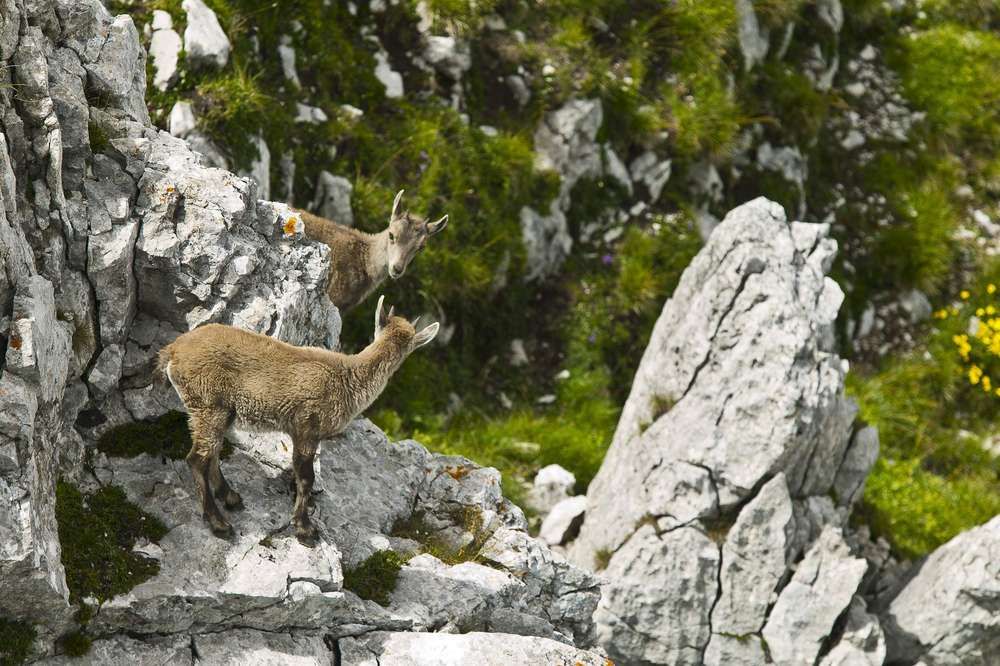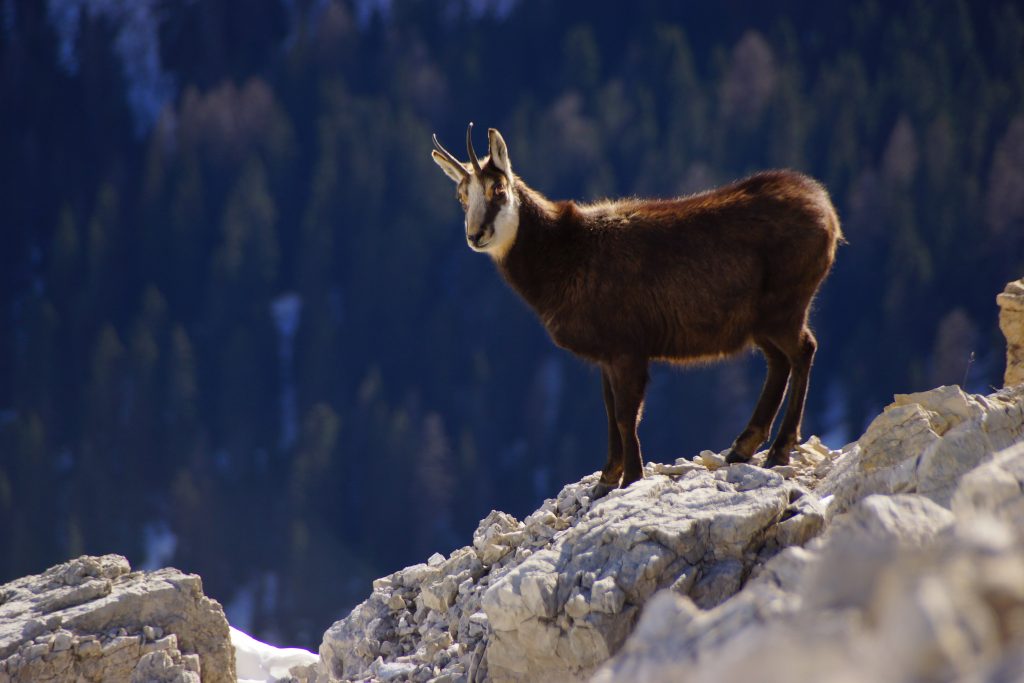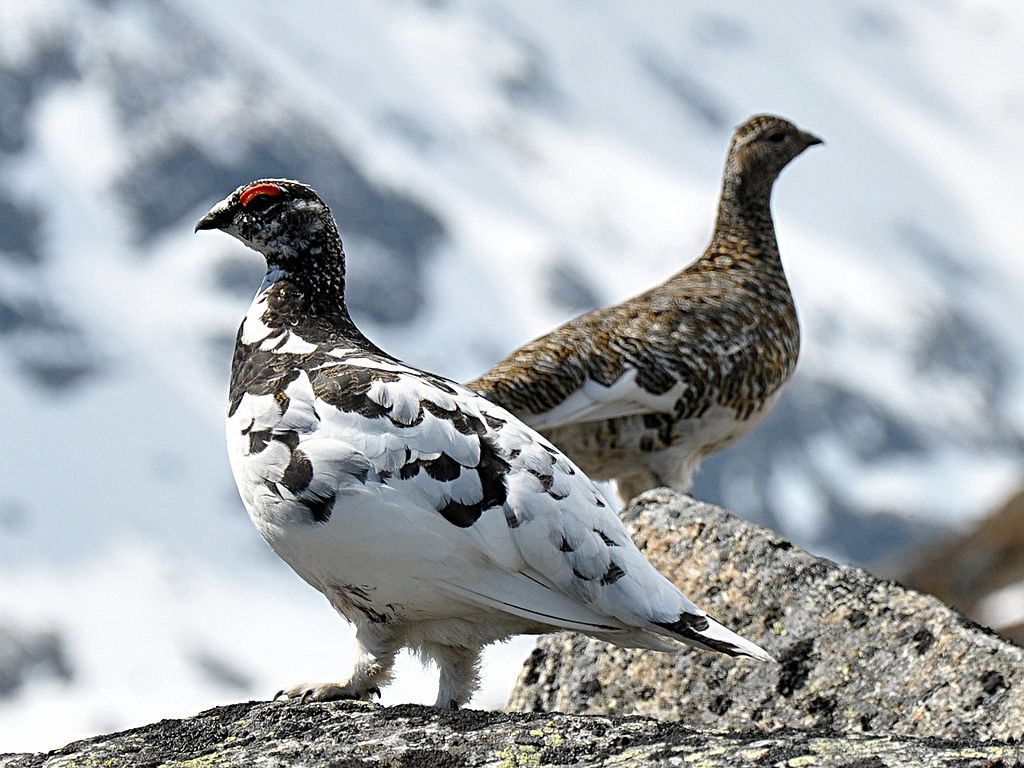With summer in full swing, it’s not just the mountain visitors that are enjoying being out and about, the local residents are making the most of it too. With rich green pastures and lots of juicy flower buds to munch on, the animals in the Alps have been making their appearances across many of our summer resorts. Keep your eyes peeled this summer when you’re on the hiking and biking trails and you may be lucky enough to spot some of them. Here is our list of the top animals to look out for in the Alps!
Golden Eagle
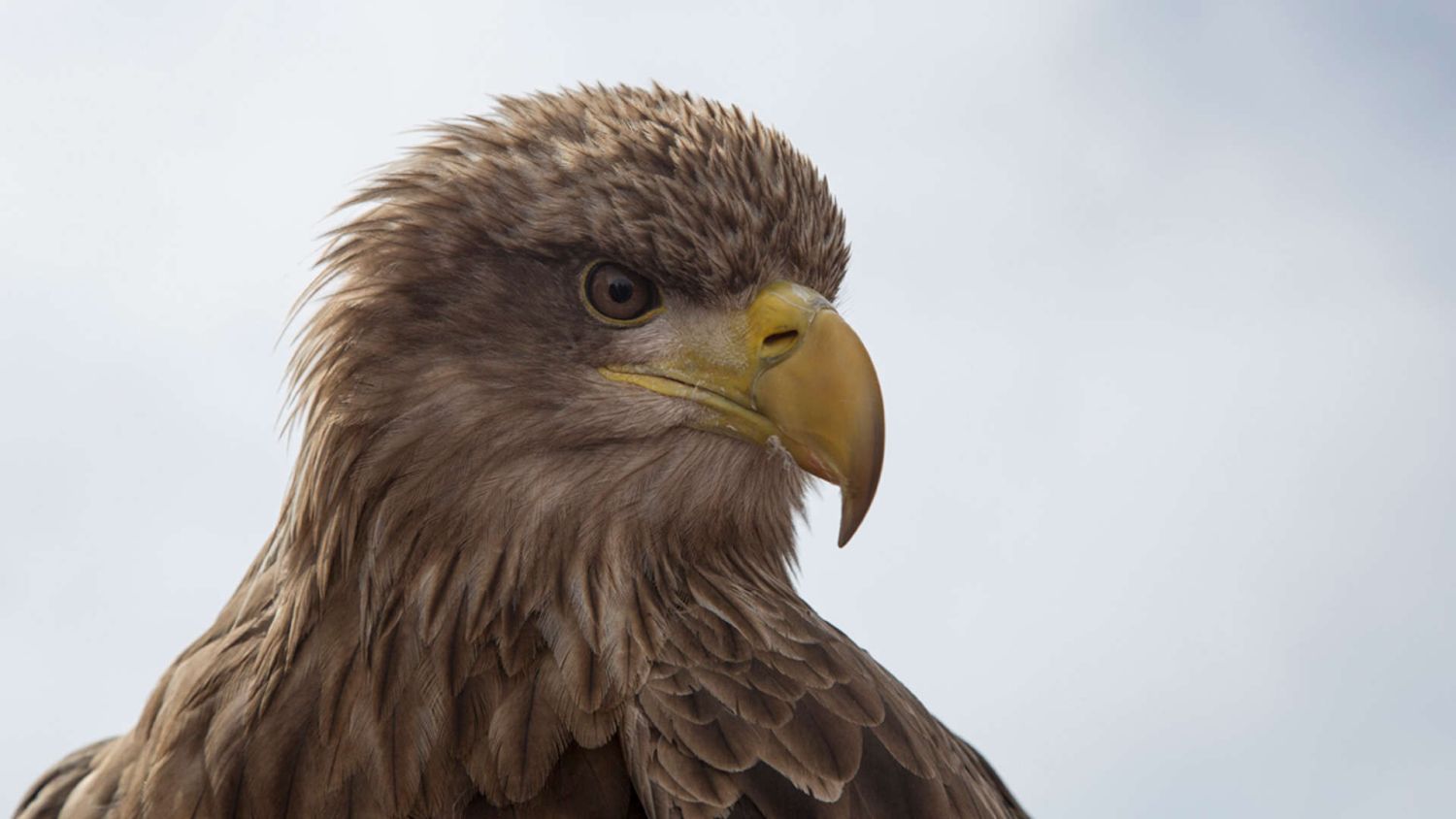
Circling in skies and diving at speed for a catch, this elegant bird of prey is often seen flying around the Alps. Being a protected species, the biggest European population of golden eagles can be found here in the Alps, with around 1,200 breeding pairs. With an amazing wing span of 190 – 230 cm the golden eagle casts an impressive shadow on the pastures below! Perhaps their best feature is their incredible sight which enables them to see a marmot even 1 km away!
Quick Facts
Weight: 6 kg (Females) 4 kg (Males)
Top Speed: 200km per hour
Territory: Their territory can span as far as 200km²
Prey: marmots, chamois, squirrels, hares, rabbits, foxes or ibex.
Nesting Season: March – May
There are many other birds of prey to be on the look out for in the Alps too such as the booted eagles, kites or vultures too, so keep your eyes peeled on the skies!
Chamois
In the Alps there are many herds of mountain goats and one of the most iconic is the chamois. The chamois is actually a goat-antelope and so is the only antelope breed native to Europe! They can often be seen standing on the rocky faces high up in the mountain tops. The chamois have some obvious distinctions. Unlike other mountain goats such as the ibex, the chamois have very short dark coloured horns as well as a very dark coat. They can be seen across all corners of the Alps but particularly in the rocky regions above the snowline and alpine forests.
Quick Facts
Height: 70 – 80 cm
Weight: 30 -50 kg
Horn Length: Around 27cm
Habitat: Elevations up to at least 3,600m. They are adapted to living in precipitous, rugged, rocky terrain.
Diet: Highland grasses and herbs, conifers, barks and needles from trees.
For resorts where you may be able to spot a chamois or two we would suggest heading to the high altitude resort of Zermatt in Switzerland, Chamonix ski area in France or Cortina in Italy.
Ibex
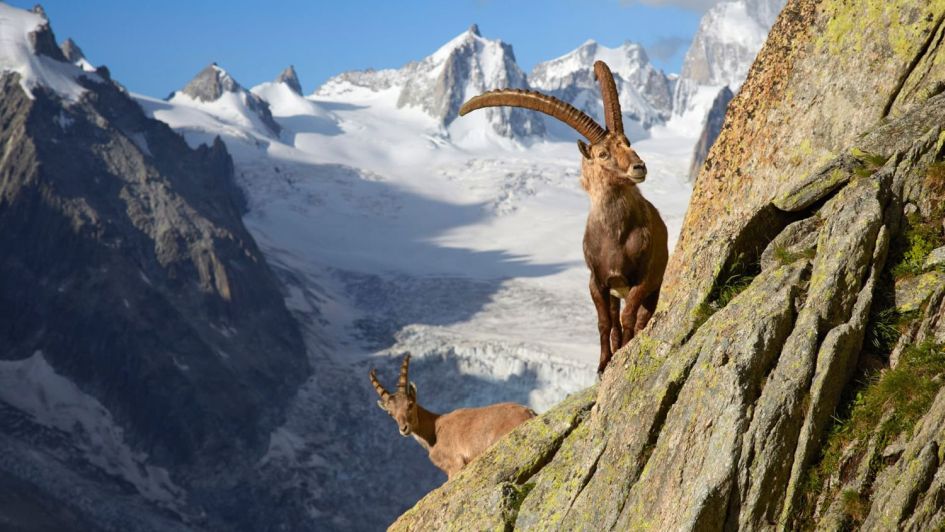
These large mountain goats are well known for their impressive climbing skills and agility. You can regularly find them enjoying a sunny cliffside where they are safely out of reach from predators. Although many people will picture the ibex with magnificent long curved horns, it is in actual fact only the males who pose these. If you spot a female they will have considerably narrower and shorter horns.
Quick Facts
Height: 90 – 100 cm
Weight: 20 – 62 kg
Horn Length: Up to 1m (Ibex males)
Habitat: Elevations of 1,800 – 3,300m . They prefer slopes of 30–45° and use small caves and overhangs for shelter.
Diet: Grasses, moss, flowers, leaves and twigs.
Did you know that it has been known for a golden eagle to be able to take down one of these large creatures!
Alpine Marmot
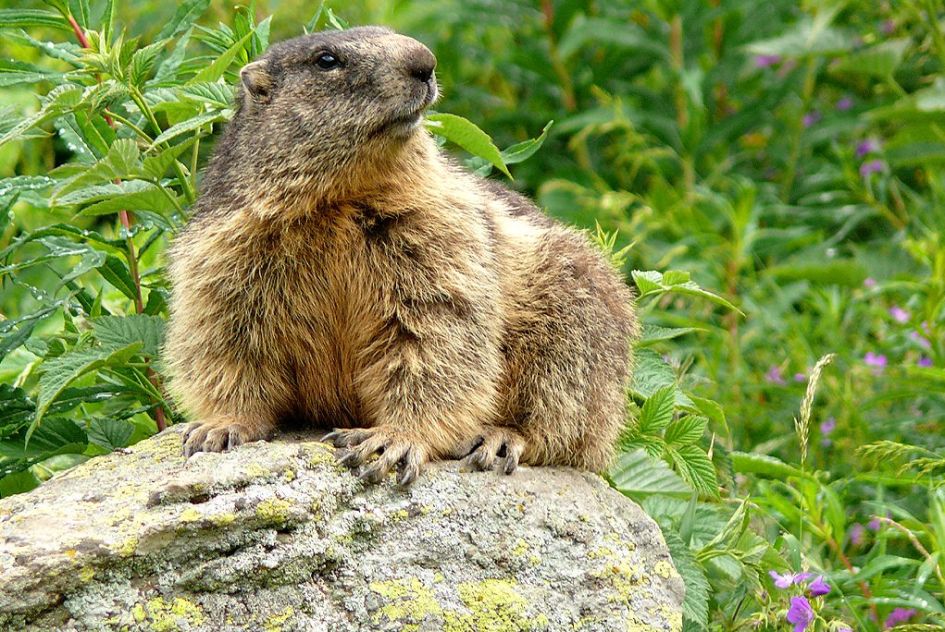
Potentially the most loved of all creatures in the Alps is the Alpine marmot. Once the snow has melted and the rich grass shoots have sprung, the marmots will come out of their burrows onto the higher mountain pastures. They are often seen stood on the lookout for eagles and other predators and give out a cry of warning to the others.
Quick Facts
Weight: 5.5 kg – 8 kg
Height: 18cm at the shoulder.
Territory: They prefer alpine meadows and high altitude pastures where soils are soft to burrow.
Diet: Grasses and herbs as wells as grain, insects, spiders and worms.
Although relatively shy, the marmot is not too phased by the hikers who may cross their paths, so be sure to have the camera at the ready for a quick photo before they hide! Marmots can be found across alpine areas of France, Italy, Switzerland, Germany, Slovenia and Austria.
Mouflon
Although not native to the Alps, the mouflon (wild sheep) were introduced to the area by Corsican hunters in the 1960’s. Now you can spot them in the medium mountain, enjoying the mountain sun and rocky meadows . The males have thick and heavy horns whereas only 40% of females will have horns.
Quick Facts
Weight: 50 kg (males) and 35 kg (females)
Height: Shoulder height of around 90 cm.
Horn Length: Curved in almost one full revolution of up to 85cm.
Habitat: Steep mountainous woods near tree lines in lower altitude.
If you’re looking to spot a mouflon this summer then Samoens in the French Alps is an ideal destination.
Wolves
Although sightings are now rare, the wolves are a native animal to the Alps. They were driven to extinction in Western Europe in the 20th century largely by hunting but they are slowly now making a reappearance in the Alps. Their territory stretches from France across northern Italy and Switzerland to Austria with thanks to conservation efforts.
Weight: Approx. 38.5 kg
Territory: Up to 6,000km². They will spend 8-10 hours moving each day.
Prey: chamois, mouflon, wild boar, deer and other prey
Protected?: Yes. The penalty for illegally killing a wolf is up to one year in prison and a fine!
There was a rare recent sighting of a wolf in the Espace Killy in Val d’Isere, the neighbouring resort to Tignes and they have also been known in the Courchevel area in the 3 Valleys.
Ptarmigan
Ptarmigan live in the upper mountains of the Alps and are well adjusted to the cold and harsh climates of winter in the Alps. This attractive bird has adapted so that it changes the colour of its plumage with the seasons. Pure white in winter and a grey-brown colour in summer, the colour change helps to camouflage the bird from predators.
Quick Facts
Length: 34- 36 cm long
Wingspan: 54 – 60 cm
Predators: golden eagle, red foxes and ermine (stoats)
Diet: Seeds, leaves, flowers and berries.
Are they easy to find? Although not endangered, these birds are being badly affected by climate change in the Alps which has meant their numbers have decreased significantly in recent years.
If you’re a wildlife enthusiast and are hoping to catch a glimpse of some incredible creatures, there is some fantastic national parks and wildlife reserves to visit during your holiday to the Alps. You can visit The Merlet Animal Park near Chamonix. The Vanoise National Park which can be accessed from Tignes, Gran Paradiso National Park in Italy or the Zermatt/Tasch/Randa wildife conservation park.
If you are after a bit more information about the resorts you can visit to see your favourite animals in the Alps, then please get in touch. You can give us a call on +44 (0)1202 203659 or send us an email and we will happily help you to find the perfect place to stay on your trip!
